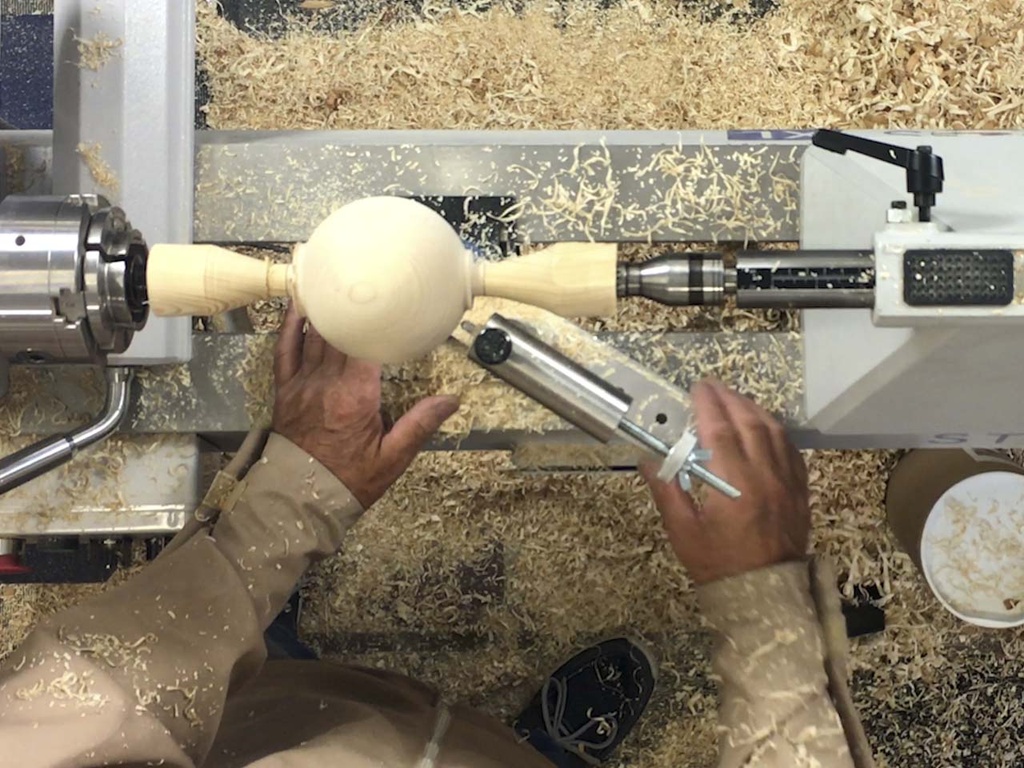Sphere jig, designed by Paul Howard
Sphere jig
This attachment ensures that everyone can turn a perfect sphere, time after time. It truly becomes child's play. The "Sphere Jig" or sphere turning attachment is suitable for producing spheres up to a diameter of 300 mm. The achievable diameter of the balls depends on the centre height of the bench. From a centre height of 200 mm, balls up to a diameter of 300 mm can be realised. The ball turning attachment works on a lathe with a centre height of 125 to 280 mm. The bed must be flat. If the bed consists of round tubes, this jig cannot be mounted. With the optional additional height extension, the jig can even be used on machines with a centre height of up to 360 mm. So if your lathe has a center height of more than 28 cm, take this riser for the sphere jig.
Carbide cutter
The jig comes with a 6 mm cutter made of tungsten carbide. This ensures a nice cutting result and little grinding. The blades can be sharpened with diamond if necessary, but usually a new blade is bought. You have turned many dozens of balls before the blade is blunt. Make sure the blade always cuts exactly at centre height. You can order a spare blade HERE.
Paul Howard
This ball-turning attachment was designed by Paul Howard and is currently produced by Hope Woodturning. Paul has invented numerous attachments for the lathe. His "jigs" are always as simple as they are effective. It is important to mount the attachment exactly in the middle between the bedpaths. This is why the set includes a wooden disc, the diameter of which can be adjusted to the bed spacing. Thus, the jig automatically centres itself in the bed of the lathe. Usable for bench bed spacings of 20 to 70 mm and a maximum thickness of 22 mm.
Supplied with:
steel mounting plate
swivel arm in parts
adjustable and lockable knife holder
clamping block
6 mm carbide cutter
technical specs:
Brand: Hope Woodturning
centre height max 280 mm
centre height min 125 mm
ball diameter max 300 mm
ball diameter min 5 mm
space between bed rails 20 to 70 mm
Tip
First rotate the ball as much as possible with a gouge. Go from cylinder to octagon and then remove those eight corners as well. The ball turning tool then only has to finish it perfectly. This will save you a lot of time.






